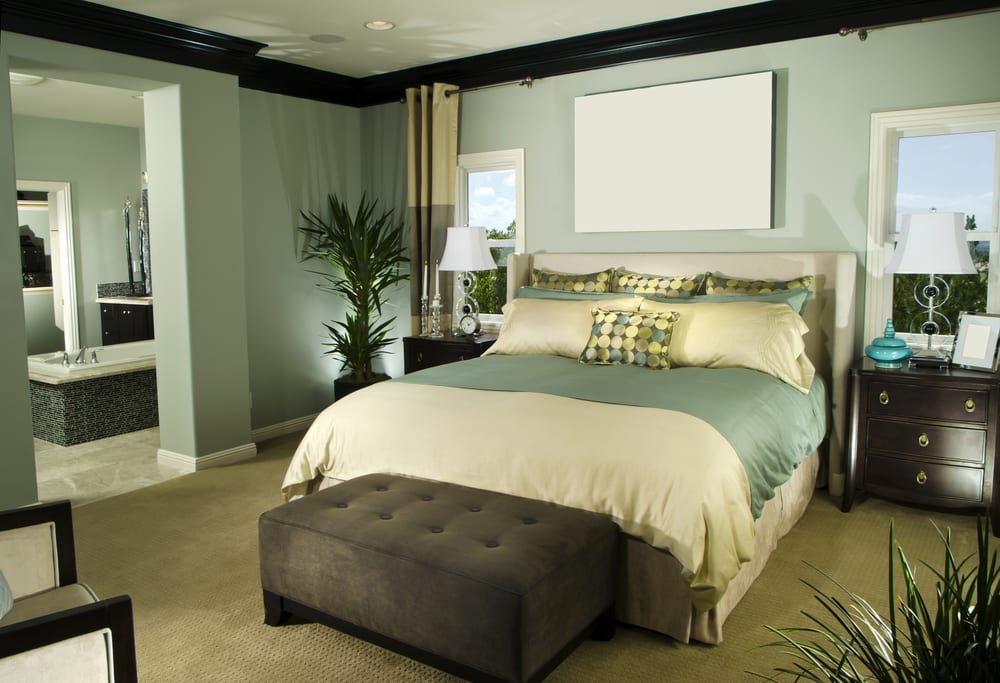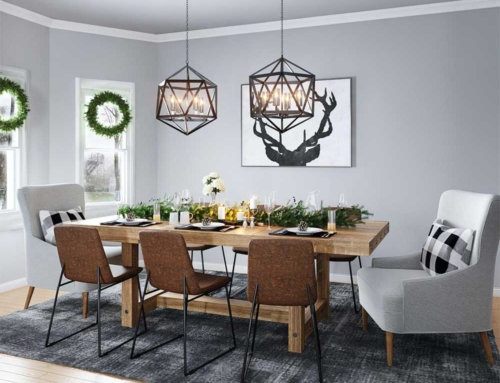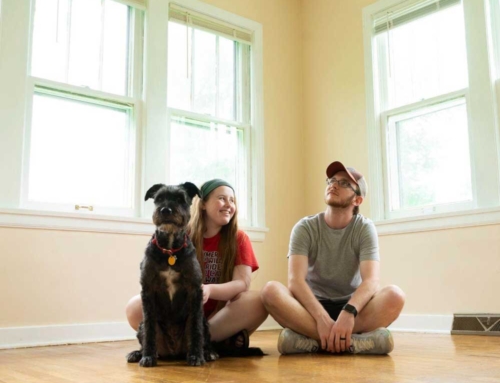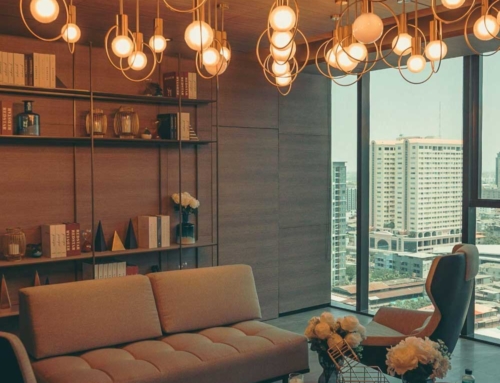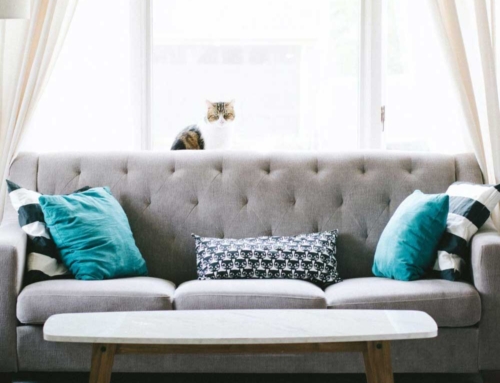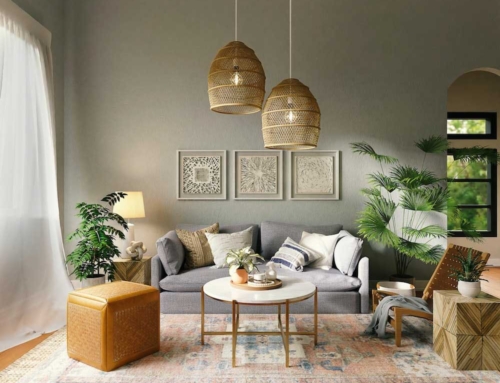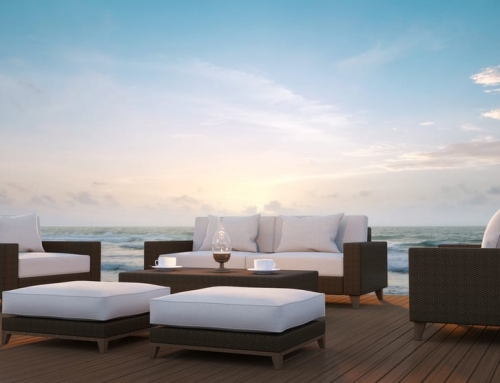Whether you’re an interior designer, or just looking to spruce things up, the bedroom is a fun but challenging space to design. Pillows and comforters, nightstands, lamps, curtains… there’s so much to play around with but all the selections can make it easy to lose track of your top two priorities; creating a space that’s both comfortable and functional. This guide will help keep you on track for creating your dream master, with five tips for decorating your bedroom.
- USE SUBTLE COLORS
For kids, we tend to stick with bright or bold colours for their room because we’re creating a fun and stimulating space. As adults, it’s recommended to use relaxing tones. Now that doesn’t mean your room is going to be boring, using neutral colours like a soft romantic cream on your walls, with a navy comforter and then a pop of colour from your pillow shams, curtains or lampshades. You can also paint an accent wall and ceilings are becoming a popular place to paint in bedroomsas well.
- GIVE YOURSELF SPACE
The bedroom should be clutter-free, with floor space to move around. The irony is that many of us end up piling extra junk from other rooms into the bedroom to hide it. If you’re not able to walk around freely in your room, without zigzaging past boxes or piles of clothing or books, then your mind will pick up on it, raising your cortisol levels. That’s a lot of added stress we don’t need. Choosing functional furniture with drawers or shelving is the best way to prevent this.
It helps to think vertically. If your space is limited, such as a small closet, then look for storage you can attach to the wall. A shelf or cupboard, for example, hung a few feet above your dresser will maximize your floor space and storage.
- VISUALIZE THE WEIGHT OF YOUR FURNITURE
You could have the largest master bedroom in Sudbury, with plenty of floor space, but the “weight” of your furniture can still make things feel crowded. All furniture has a visual weight; picture a bed frame for example. A bed that sits on the metal frame hidden underneath, has a much lighter visual weight than a bed placed inside a chunky wooden frame. That chunky wooden frame, however, is still visually lighter than a bed with a big frame and posts on each corner going up to the ceiling.
If your room is small, design your floor plan around furniture with a minimalist feel. Don’t worry about needing a centrepiece, your bed can be the focal point. If the room still feels heavy, an excellent trick for adjusting the visual balance in any room is with wall mirrors. Mirrors have the ability to create a negative visual weight, as though they’re adding space to the room.
- LAYER YOUR LIGHTING
There are three basic types of lighting, Ambient is lighting that lights up the whole room, chandeliers or pot lights are good examples. Task lighting naturally stimulates the brain, so it allows you to focus, such as a swinging arm lamp, or under-cabinet lighting. Finally, Accent lighting is used as decoration, or to light a feature in a room such as artwork.
Layering these three types of lighting in your room not only helps to create a cozy atmosphere but also increases the functionality of your bedroom, without taking up floor space or adding clutter.
- NEVER FORGET YOUR PERSONAL STYLE
These tips are intended to get you thinking about your space and help you make decisions along the way, The best advice you could follow, however, is to be true to your own personal style. As we mentioned, your top priorities for decoratingyour bedroom are comfort and function. If your bedroom isn’t tailored to your needs, then you won’t feel comfortable.
